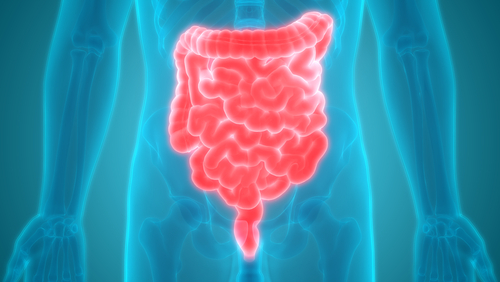Daily treatment with 1 mg of ozanimod reduced gut inflammation in patients with moderately to severely active Crohn’s disease, early data from the phase 2 STEPSTONE study show.
B.G. Feagan of Western University, London, Ontario, Canada, presented the results in a poster titled “Early histological improvement demonstrated with oral ozanimod in patients with moderately to severely active Crohn’s disease in the STEPSTONE trial” at the 14thCongress of European Crohn’s and Colitis Organisation (ECCO), March 6-9 in Copenhagen, Denmark.
Ozanimod is an investigational therapy being developed by Celgene that works as an “immunomodulator.” The therapy reduces the number of activated lymphocytes (a type of immune cells) circulating in the gastrointestinal tract by targeting two receptor proteins — the sphingosine-1-phosphate (S1P)-1 and -5.
The open-label STEPSTONE study (NCT02531113) is testing ozanimod in patients with moderately to severely active Crohn’s disease. Patients were first enrolled in an induction period of 12 weeks, where they all received 1.0 mg of ozanimod daily. Patients who complete the induction period can enter the 100-week extension period, where they will continue to receive study medication. The trial enrolled 69 patients (mean age 38).
Researchers presented data from a post hoc analysis with data from the 12-week treatment period where they used the Robarts Histopathology Index (RHI) to assess the treatment’s efficacy.
RHI is a validated index scoring system that evaluates disease activity by assessing the characteristics of the gut tissue, namely inflammation state, including the number of immune cells that infiltrate the gut. The total score ranges from 0 (no disease activity) to 33 (severe disease activity).
The analysis included data from 52 patients — 30 of them had previously been treated with a biologic, such as anti-TNF-alpha or Entyvio (vedolizumab), and 22 patients had never been treated.
The results showed that treatment with ozanimod for 12 weeks resulted in improvements in the RHI scoring across all the patients, independently of whether they had received prior treatment. Moreover, the improvements were seen across the entire intestine, not localized to a specific area.
The adverse effects that arose during the 12 weeks, researchers said, were linked to the disease and not the treatment. No new safety signals were identified.
Overall, the results from the STEPSTONE trial “demonstrated early histological improvements among patients with moderately to severely active CD who were treated for 12 weeks with ozanimod,” researchers concluded.
In the Phase 2 TOUCHSTONE study (NCT01647516) for patients with ulcerative colitis, daily treatment with ozanimod at a dose of 1 mg led to improvements when compared to placebo controls.

